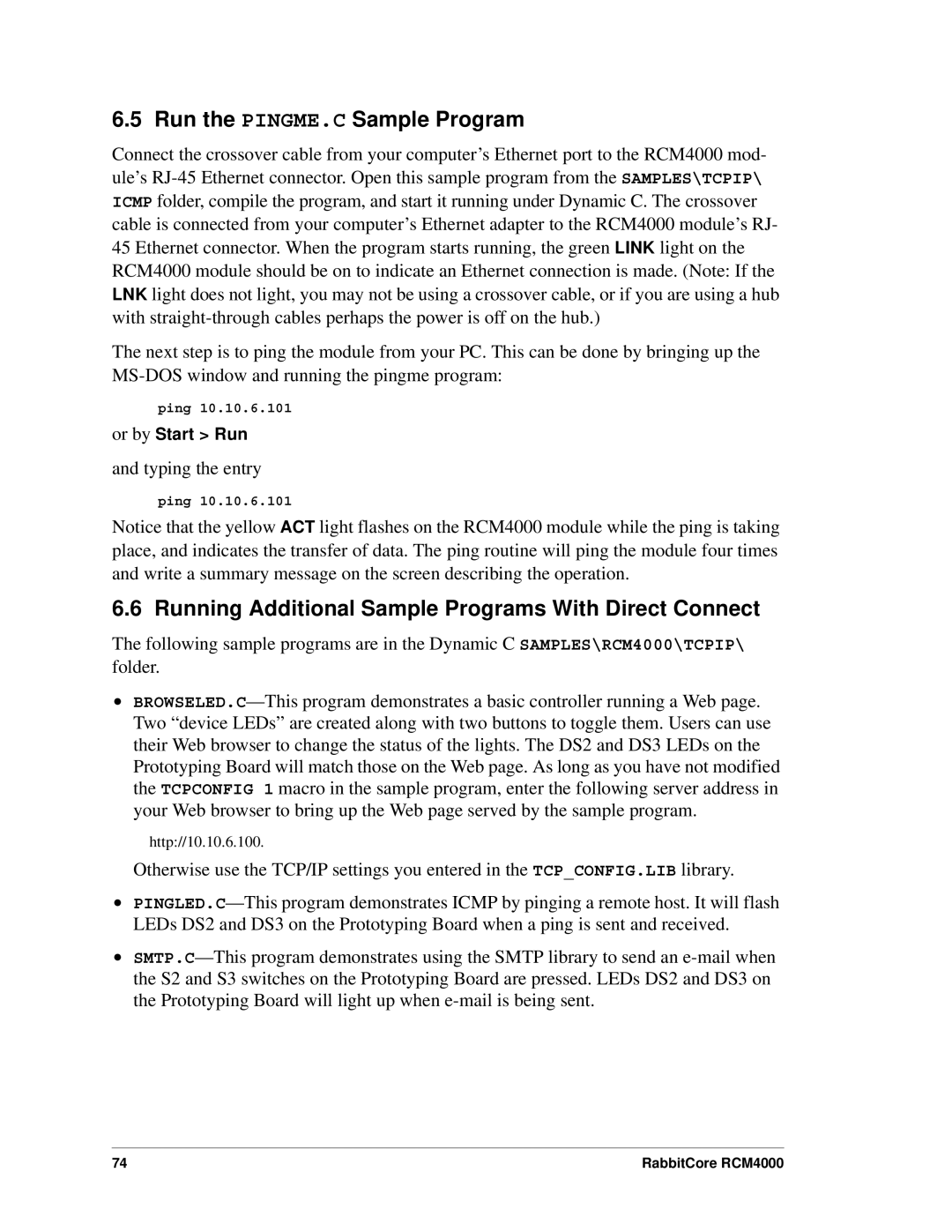
6.5 Run the PINGME.C Sample Program
Connect the crossover cable from your computer’s Ethernet port to the RCM4000 mod- ule’s RJ-45 Ethernet connector. Open this sample program from the SAMPLES\TCPIP\ ICMP folder, compile the program, and start it running under Dynamic C. The crossover cable is connected from your computer’s Ethernet adapter to the RCM4000 module’s RJ- 45 Ethernet connector. When the program starts running, the green LINK light on the RCM4000 module should be on to indicate an Ethernet connection is made. (Note: If the LNK light does not light, you may not be using a crossover cable, or if you are using a hub with straight-through cables perhaps the power is off on the hub.)
The next step is to ping the module from your PC. This can be done by bringing up the MS-DOS window and running the pingme program:
ping 10.10.6.101
or by Start > Run
and typing the entry
ping 10.10.6.101
Notice that the yellow ACT light flashes on the RCM4000 module while the ping is taking place, and indicates the transfer of data. The ping routine will ping the module four times and write a summary message on the screen describing the operation.
6.6 Running Additional Sample Programs With Direct Connect
The following sample programs are in the Dynamic C SAMPLES\RCM4000\TCPIP\ folder.
•BROWSELED.C—This program demonstrates a basic controller running a Web page. Two “device LEDs” are created along with two buttons to toggle them. Users can use their Web browser to change the status of the lights. The DS2 and DS3 LEDs on the Prototyping Board will match those on the Web page. As long as you have not modified the TCPCONFIG 1 macro in the sample program, enter the following server address in your Web browser to bring up the Web page served by the sample program.
http://10.10.6.100.
Otherwise use the TCP/IP settings you entered in the TCP_CONFIG.LIB library.
•PINGLED.C—This program demonstrates ICMP by pinging a remote host. It will flash LEDs DS2 and DS3 on the Prototyping Board when a ping is sent and received.
•SMTP.C—This program demonstrates using the SMTP library to send an e-mail when the S2 and S3 switches on the Prototyping Board are pressed. LEDs DS2 and DS3 on the Prototyping Board will light up when e-mail is being sent.
